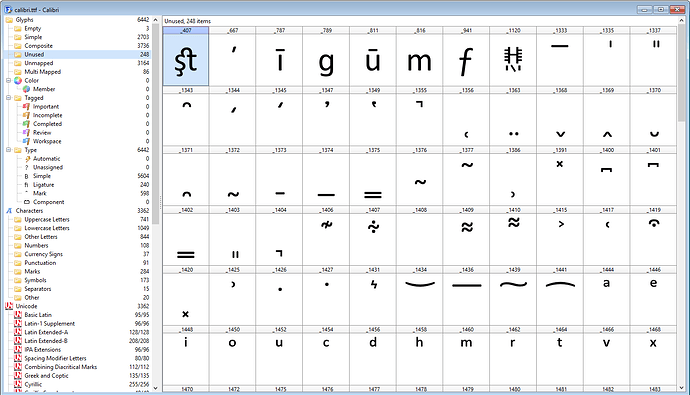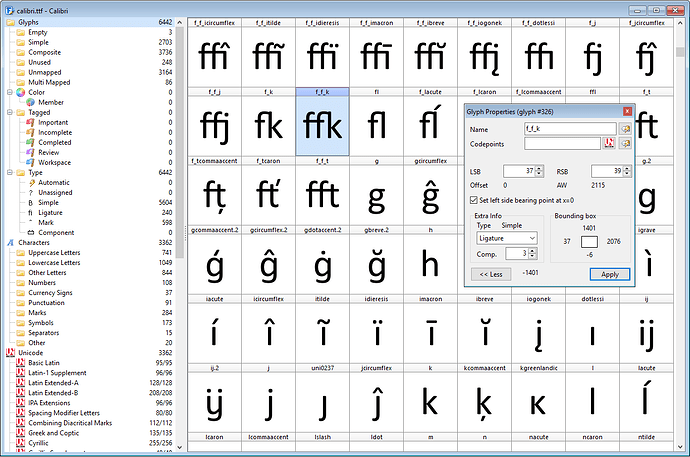Aha. I was just about to write back saying that – once again – I couldn’t find where on earth you found these “lists of code points,” and fiiiiiiiinally I found them!
For future reference, if anyone ever comes here down the road and asks this same question, then copy/paste the following instructions (which I really wish you’d given me way back at the beginning of this thread)…
Go under Tools → Glyph Transformer.
Under “Characters and Glyphs,” select “Insert Characters.”
Then, on the right-hand side you’ll see what looks like a little yellow file folder, and if you hover your cursor over it you’ll see a tooltip that says “Open script” [THIS IS THE PART YOU NEGLECTED TO TELL ME BEFORE and I kept looking in that left-hand list for “Ligature Collection,” etc!] ![]() and then from there you choose the script you want to use (whether that be “Ligature Collection,” or “Discretionary Ligatures,” or whatever else).
and then from there you choose the script you want to use (whether that be “Ligature Collection,” or “Discretionary Ligatures,” or whatever else).
No offense, but I actually shared this thread with a professional type designer friend of mine, just to get his take on the discussion here. He’s on Mac, and uses Fontlab for his work and isn’t familiar with FontCreator and wasn’t able to help me, but he read the entire series of posts here from beginning to end, and was as flabbergasted as I’ve been with the really quite overly-confusing responses that I’ve been getting to what have been quite simple, straightforward questions. As I said to him, too, it’s been like asking where the Louvre Museum is, and instead of getting the answer “Paris,” I’m given the longitude and latitude coordinates – or, indeed, given the longitude but not the latitude. ![]()
I really do hope you’ll take that in the spirit that it’s meant – if someone asks a question, just answer the damn question, don’t give them “PhD-level” answers that are way over the person’s expertise level, and just keep it simple and straightforward, with step-by-step instructions on how to do it (without skipping over steps). ![]()
And with that said, and with my due and most genuine respect (sincerely), once again thank you! After all this, all this back-and-forth, I’ve finally found the answer that I was looking for with my very first post here. ![]()

